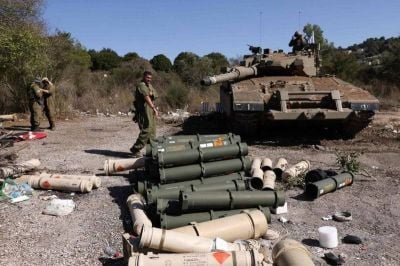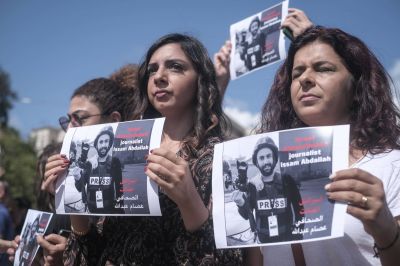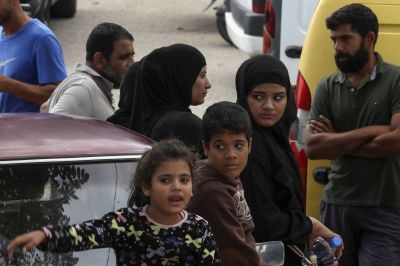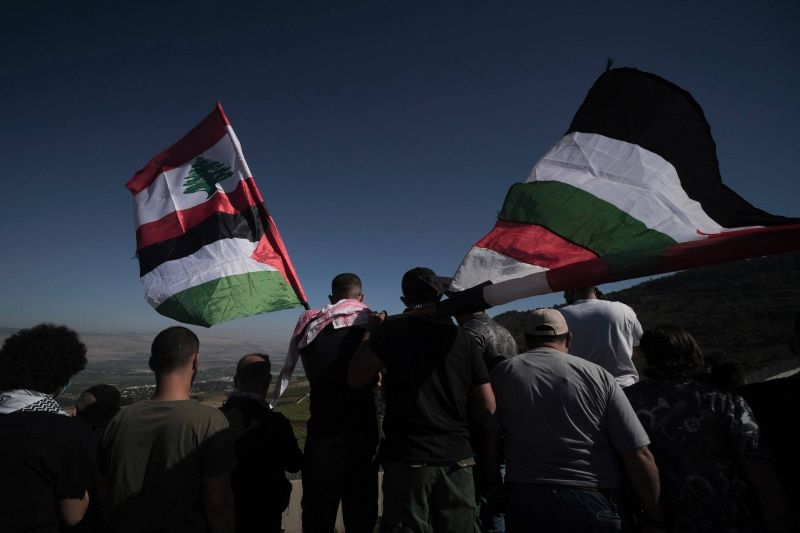
A protest on Lebanon's southern border, May 16, 2021. (Credit: João Sousa/L'Orient Today)
What is Hamas?
Hamas, an acronym for Harakat al-Muqawama al-Islamiya (Islamic Resistance Movement), emerged as a splinter group of the Muslim Brotherhood, a global organization that envisions a system of Islamic rule.
Following the outbreak of the first Intifada, a Palestinian uprising against the Israeli occupation, Hamas emerged in December 1987 out of an Islamic charity, Mujama al-Islamiya, which had been established in Gaza in 1973, by Sheikh Ahmed Yassin, who was involved with the Brotherhood.
Hamas initially established itself as the Muslim Brotherhood’s political arm in Gaza. But the group gained more prominence after the Palestine Liberation Organization (PLO), a nationalist Palestinian movement led by Yasser Arafat, engaged in peace negotiations with Israel. The PLO later signed the Oslo Accords in 1993, ultimately recognizing Israel’s right to exist.
 A picture of Yasser Arafat in the Shatila Palestinian refugee camp in Beirut. (Credit: João Sousa/L'Orient Today/File photo)
A picture of Yasser Arafat in the Shatila Palestinian refugee camp in Beirut. (Credit: João Sousa/L'Orient Today/File photo)
This breakthrough marked a pivotal turning point in the Palestinian political landscape and led Hamas to gain traction among those who were not happy with the peace deals.
Imad Salamey, associate professor of Middle Eastern political affairs at the Lebanese American University, explained to L’Orient Today that Israel “nurtured” the division among Palestinian leadership, emanating from PLO’s peace negotiations with Israel, contributing to the growing influence of Hamas.
To undermine the PLO, Israel promoted and employed "divide and rule" policies in the 1980s when it started supporting and financing Islamic charities.
In a 2021 New York Times op-ed, Jerusalem bureau chief from 1979 to 1984, David K. Shipler, wrote, “In 1981, Brig. Gen. Yitzhak Segev, Israel’s military governor of Gaza, told me that he was giving money to the Muslim Brotherhood, the precursor of Hamas, on the instruction of the Israeli authorities. The funding was intended to tilt power away from both Communist and Palestinian nationalist movements in Gaza, which Israel considered more threatening than the fundamentalists.”
“The balance of power started tilting toward Hamas and it was soon reflected among Palestinian factions in Lebanon,” Salamey added. “Also, left-wing groups in Lebanon, backed by the Soviet Union and other Arab states, sympathized with the Palestinian cause.”
Hamas in Lebanon
“It is important to understand the history of the relationship between the Palestinians and the Lebanese, particularly the Lebanese Shia community,” Jeroen Gunning, a professor of Middle Eastern Politics and Conflict Studies at King's College London, told L’Orient Today.
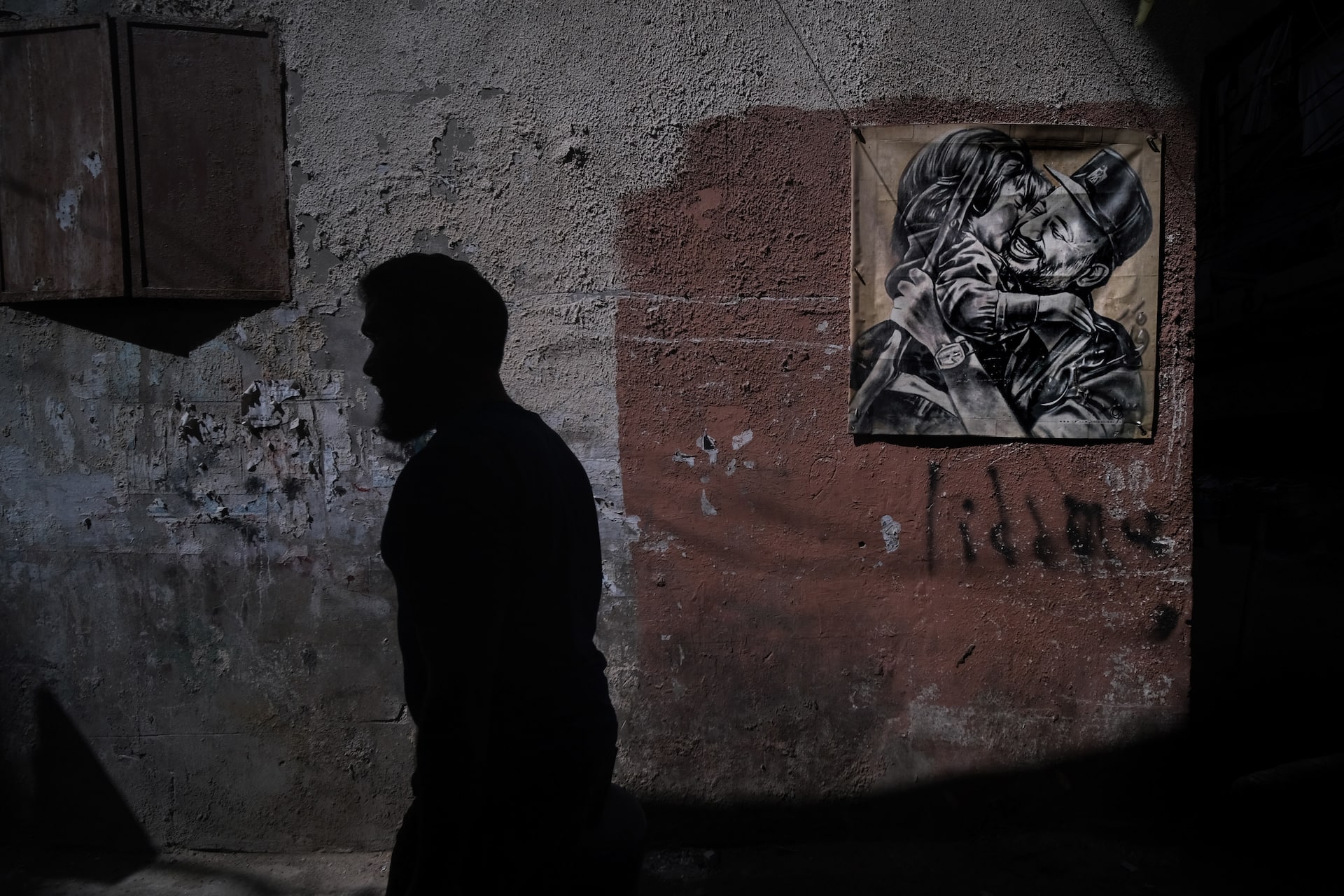 The Shatila Palestinian refugee camp in Beirut. (Credit: João Sousa/L'Orient Today/File photo)
The Shatila Palestinian refugee camp in Beirut. (Credit: João Sousa/L'Orient Today/File photo)
“If we go back to before the creation of the hard border of Mandatory Palestine,” a geopolitical entity established between 1920 and 1948 in the region of Palestine which was under British administration, “and Lebanon after World War I, the people of South Lebanon traded southwards through the port of Akka, then-Palestine, or Acre, in Israel today,” he explained.
“The communities in South Lebanon and the North of what was then Palestine were closely intertwined,” added Gunning, who is a leading scholar on the politics of Hamas and has written the book Hamas in Politics: Democracy, Religion, Violence.
Following the Nakba and the creation of Israel in 1948, Palestinians fled to Lebanon. A number of refugee camps emerged, also bringing about Palestinian faction groups in Lebanon.
In 1969, when the PLO was still strong and influential, the Lebanese state granted Palestinian camps the autonomy to manage their own security, independent of the Lebanese Army, through the Cairo Agreements.
“This provided them with a substantial infrastructure for nurturing armed militant groups,” Salamey pointed out.
However, the PLO moved its headquarters to Tunisia in 1982, following its expulsion from Lebanon by Israeli forces during the 1982 Lebanon War.
“So, [the PLO] lost a lot of momentum and steam, transitioning into a proponent of peace, especially in the West Bank,” Salamey said.
Meanwhile, Hamas’s radicalization intensified with the rise of newly formed Islamist militias in the 1990s, such as the Taliban in Afghanistan and the concept of welayat al-faqih, Arabic for “the guardianship of the Islamic jurist” in Iran after its 1979 revolution, Salamey explained.
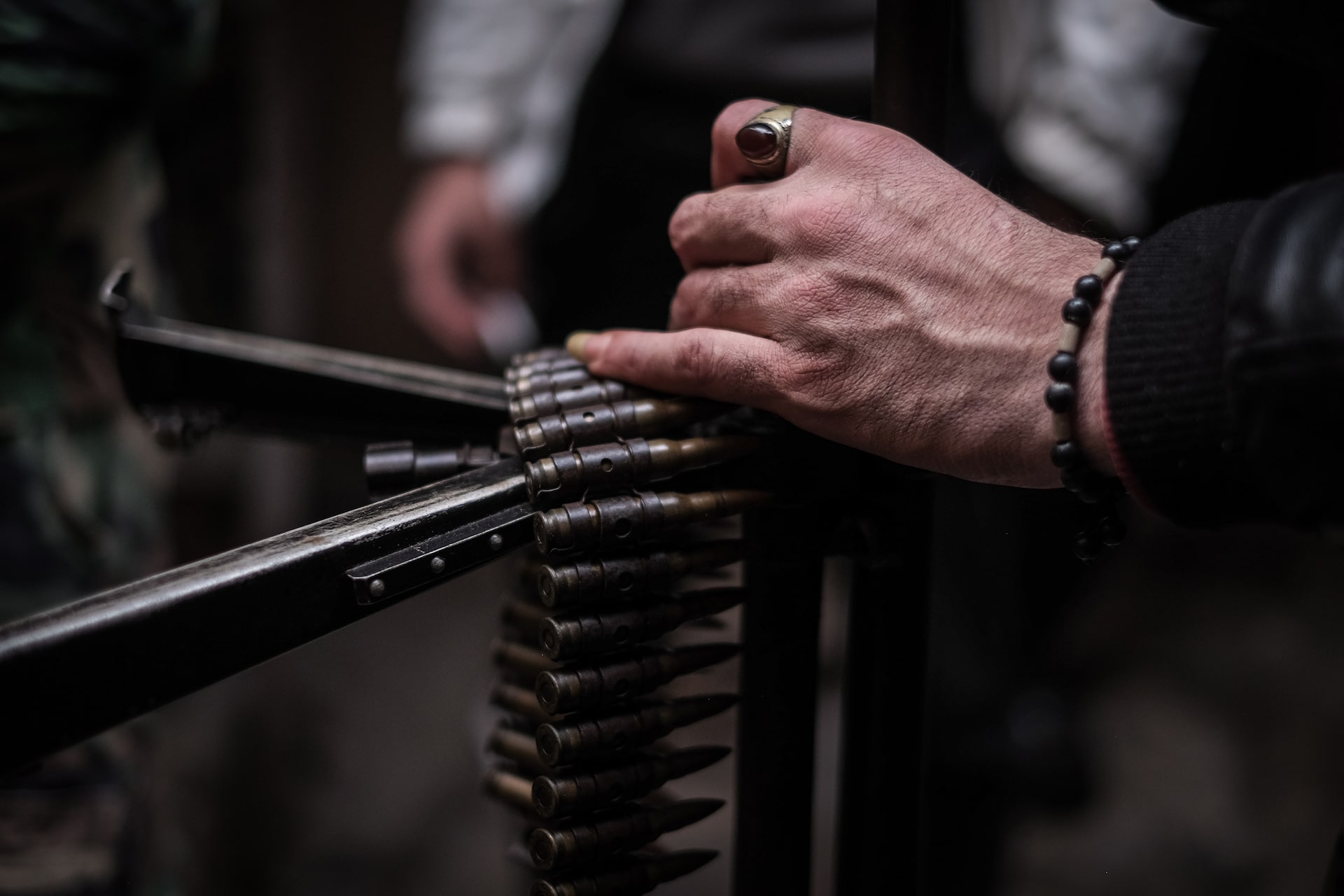 An armed man inside the Shatila refugee camp in Beirut. (Credit: João Sousa/L'Orient Today/Illustrative photo)
An armed man inside the Shatila refugee camp in Beirut. (Credit: João Sousa/L'Orient Today/Illustrative photo)
In the Gaza Strip, Hamas emerged as a dominant political and armed group.
In Lebanon, Hamas also grew in power, although with certain limitations, as Hezbollah closely monitored its activities and ensured they remained under its influence and control, Salamey noted.
Hamas and Hezbollah’s turbulent relationship
The relationship between Hezbollah and Hamas has experienced fluctuations over time.
Initially, the two were closely aligned because Hezbollah sought to undermine the PLO and its Palestinian political and military organization, Fatah movement, due to their collaboration with Israel, Salamey explained.
However, as Hamas developed closer political alliances with Turkey, which Iran had its own issues with, tensions arose. In response, Salamey said, “the Iranians created a group called al-Jihad al Islami [Islamic Jihad] to be in close sync with the Iranian position.”
The relationship between Hamas and Hezbollah faced further turbulence during the Syrian uprising in 2011 when Hamas supported the Syrian opposition, a stance that conflicted with Hezbollah's support for the Syrian regime, he added.
“And this position caused tensions between Hamas and Hezbollah as Hezbollah was fighting alongside the Syrian regime and probably fighting Hamas in Syria, in Yarmouk and other refugee camps where Hamas had presence,” Salamey said. “So they basically fought each other.”
“Now it seems that there is a shift in Hamas orientation and I guess the closer the Iranian-Turkish relationship gets, the stronger the bond between Hezbollah and Hamas.”
Beirut emerges as Hamas’s key hub
Hamas enjoys the support of two main Sunni allies in the region, including Turkey and Qatar.
Both Turkey and Qatar have been, for the last decade or so, the host of some of Hamas’s main exiled political leadership.
“Although Iran has played an important part in financing Hamas’s military wing and Hamas and Hezbollah are both part of the Iran-led Axis of Resistance, relationships between Hamas, Iran and Hezbollah have been turbulent in recent years,” Gunning explained.
“Hamas sided with the Syrian opposition, thus causing a break from Hezbollah and Iran which supported the Syrian regime. Hamas pivoted towards Egypt, Turkey and Qatar, but the toppling of former Egyptian President Mohammad Morsi in 2013 started a gradual return to relations with Iran and Hezbollah, which were further cemented by Qatari-Saudi diplomatic reconciliation in 2021 and the Turkish-Israeli rapprochement in 2022.”
While Hamas has long been a part of local politics in the Palestinian refugee camps in Lebanon, the rapprochement between Hamas and Hezbollah has led to an increase in Hamas’s presence in Lebanon, “reportedly not only politically but also militarily,” Gunning said.
The presence of Saleh al-Arouri, deputy head of Hamas’ political bureau, appears to be a focal point for creating a larger Hamas paramilitary infrastructure in Lebanon, according to Gunning.
In April, Hamas launched 34 rocket attacks from Lebanon toward northern Israeli areas, according to the Israeli army. It was deemed the biggest attack since 2006, when Israel fought a war with Hezbollah.
‘Joint security room’ in Lebanon?
In 2022, Yahya al-Sinwar, Hamas’s leader in Gaza, revealed the existence of a "joint cooperation with the resistance axis during a war between Gaza and Israel in 2022, through a joint security room.”
The "axis of resistance" refers to Lebanese, Palestinian, Syrian and other Iran-backed groups opposed to Israel.
Some analysts assume that this joint security room is based in Lebanon.
“It is unclear what exactly this consists of and how much it could control military orders between the different organizations [Iran, Hezbollah and Hamas], but it clearly seems that there is cooperation,” Gunning said.
However, it appears that the three entities are separate and military decisions come from each organization separately, he added.
“Historically, Hezbollah has been reluctant to share operational details with Hamas,” Gunning noted, adding that would “risk exposure to Israel's wide network of informants among Palestinians.”
Sharing operational information with Hezbollah could carry costs for Hamas as well, he added.
“The head of Hamas' political bureau in Beirut, Ahmed Abdul-Hadi, insisted that Hamas did not coordinate the Oct. 7 attacks with Hezbollah or Iran and I think it is very plausible from an operational perspective that Hamas’s military leadership kept the details to a small circle to avoid leaking information to the Israelis.”
“But of course this doesn't mean that there wouldn't be coordination between the three parties afterwards,” Gunning said.
Ahmed Abdul-Hadi, the head of Hamas's political bureau in Beirut, has emphasized that the group gave no prior notice to Hezbollah, their ally, regarding the Oct. 7 attacks on Israel.
Eradicating an indigenous movement is ‘notoriously difficult’
“It seems that Hamas coordinates with Hezbollah if it wants to launch rockets from Lebanon while the latter would stop it if it’s not in its interest,” Gunning said. “But we don’t know where the boundary lies.”
If Lebanon were to be drawn into war with Israel, Gunning believes that Israel not only will target Hezbollah's infrastructure but also that of Hamas.
Following the Oct. 7 attacks, Israel has declared that its goal is to eliminate Hamas. Will these ambitions extend to this group’s presence in Lebanon?
Gunning said that “from a historical perspective, it is notoriously difficult to eradicate an indigenous movement which has a wide grassroots support.”
“Israel failed in 2006 when it tried to eradicate Hezbollah in Lebanon and it failed in previous cases when it tried to eradicate Hamas in Gaza.”
